#some guy just came in dressed like an actual victorian man with a waistcoat and a sort of moustache goatee combo
Text
it may not be friday but i am taking a leaf out of @dominimoonbeam’s book for a bit of cafe writing today, and i can highly recommend it it is very fun
#this is fun i never take my laptop for a walk!! :DD#listen to music in the warm while i drink a drink i didn't have to make?? we have cracked the code#also it means some background people watching which is always quite exciting#some guy just came in dressed like an actual victorian man with a waistcoat and a sort of moustache goatee combo#1. sorry what 2. how do i become him immediately#domini beloved <3
19 notes
·
View notes
Text
Top 5 Things That Will Kill You In the Victorian Era

If you’ve ever spent more than two seconds with me, you know that I live and breathe the fog-choked air of Victorian London. All day. Every day of my life.
See, in many ways, the Victorians were the first version of us--overwhelmed by rapidly-changing technology (and its awful effect on the climate); dealing with incredible wealth gaps; grappling with rising crime and faster travel and out-of-control media and the whole, “God is dead, oh no” thing.
Also, everything was trying to kill you.
Like, literally almost everything.
From your clothes to your doctor to your canned food, here are the top five things that will kill you in the Victorian era.
5. Other Victorians
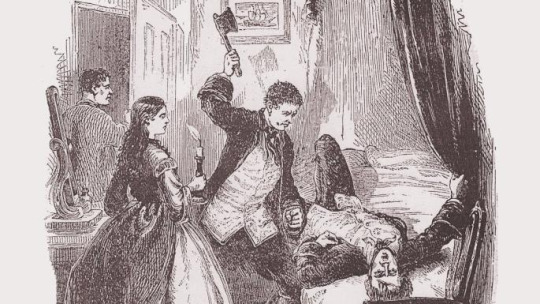
If the rise of penny dreadfuls (cheap magazines stuffed with horror stories for us morbidly-inclined goth types) was any indication, Victorians loved them some true crime.
And there was no shortage of subject matter to choose from: depending on where you ventured in London, at least, you could be subject to anything from pickpocketing to mugging to violent assault and, of course, murder.
There were a few reasons for this:
For one thing, the population in London alone increased by millions in the 19th century, and approximately no one was prepared for that. So, to accommodate the rapidly-booming population, the wealthy folks in charge reached out and lovingly ensured the masses of the disenfranchised poor were taken care of by redistributing resources and education and access to opportunities that improved lives on a both a personal and social level.
Lol, no, I’m totally kidding; they shoved them into slums and tenement buildings and pretended they didn’t exist.
So of course, there was a rise in crime, because if you have five kids and you can’t find gainful employment and your family will starve if you don’t steal that basket of food over there, or that purse that lady left sitting over THERE, what are you going to do? You’re going to steal the food and the purse to survive, Jean Valjean, I understand, I do.
Except the powers that be did NOT understand, and instead routinely espoused the idea that if people were poor, it was because they were morally bankrupt, or inherently bad, somehow, and the “criminal classes,” as they came to be known by the growing Victorian middle and upper-middle classes, were simply considered genetically bad to the bone and therefore undeserving of assistance.
Basically:
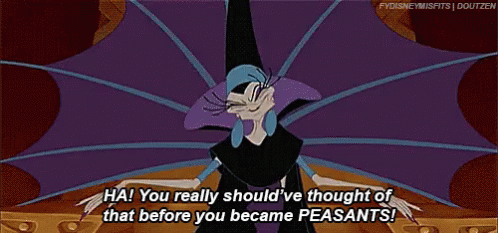
So ANYWAY.
Crime was on the rise and there were multiple efforts to stop it with varying degrees of success, but big city usually = big crime, especially when there’s a massive gap between the one percent-ers and THE REST OF US, WASHINGTON.
Ahem.
All that crime? The booming news industry loved it. The press ate it up and then spit it back out in salacious headlines that never even bothered with journalistic objectivity, like this gem:

I mean. Full disclosure: I, too, agree that cutting off a woman’s head, arms, and legs and then burning them is “awful, inhuman, & barbarous” but just...maybe...maybe tone it down? Just a bit?
No? Okay.
See, here’s the thing: crime sells. It always has. And papers went nuts with full illustrated spreads about the latest brutal murders so you could sit in your parlor and get anxiety poops thinking about how the butcher down the street looked at you funny the other day and oh, God, you’re probably next, oh God.

The most famous murderer of the era, was, of course, Jack the Ripper, which was just the orchestral climax of a hideously corrupted society that had bubbled into naught but a festering carbuncle, an ulcer upon the very soul of man, trussed up as a city of industry, but which is merely Salome, dancing with the Lamb’s head upon a platter and sending us all tumbling into a fiery pit.
....Ahem, again.
Some popular ways your fellow Victorians could kill you included: dueling (with swords but usually with revolvers), stabbing, garroting, and, probably the most popular method of the era, poisoning.
Speaking of which...
4. Anything dyed that hip shade of green
In 1775, a guy named Carl Wilhelm Scheele invented a new shade of green, cleverly called Scheele’s green, and it instantly became a hit. Pretty soon, manufacturers and tailors were dyeing everything this color.

Look at it. Bright, airy. Calls to mind a fresh, spring meadow. (What’s that, you ask? Well, before the Industrial Revolution belched out black smoke onto absolutely everything, there were these things called plants and grass and they were all over the place and you could frolic through them and it was very nice for your serotonin levels.)
I mean, listen, this isn’t really my color because anything vaguely yellow-ish makes my already yellow-ish skin look especially jaundiced, but it’s a lovely shade:

Besides using it to create beautiful dresses and tasteful waistcoats, they used it inside book covers:

And it was a super popular wallpaper color:

They had green candles and green cups and green kitchenwares and green paint.
But while Carl Wilhelm Scheele didn’t exactly murder anyone (even though he has three names like every serial killer ever), he sort of, accidentally, indirectly, kinda...did.
Because that springy dye contained every Victorian black widow’s favorite method to dispose of a troublesome husband: arsenic.
Scheele, of course, had no idea--no one did--so I’m fully exonerating him here, but the poison nonetheless started to take its toll.
Reports began to surface of kids getting sicker and sicker and then dying in their green wallpapered rooms; of fashionable ladies rocking those green dresses at balls and then ALSO getting sicker and sicker and breaking out in horrible sores before dying.
They even used this stuff to dye food green, so of course, anybody who tucked into Victorian green eggs and ham also, you know. Died.
And if they DIDN’T die, they got cancer, because if arsenic doesn’t kill you, it will give you cancer. And then kill you.
Eventually, as science advanced and went, “HEYO, there’s literal poison in this stuff,” consumers were like, “Well, shoot, this summer’s hottest beach shade just killed an entire boarding school,” and Scheele’s green finally fell out of favor.
It was, however, used as a pesticide up through the 1930s, so...way to use the...leftovers? I guess?
3. Your canned food
Hey, now that we’re on the topic of deadly chemicals being where they absolutely should not be, let’s talk about canned food.
In the Victorian era, it was the new Hot Thing (next to arsenic green). You mean I can can my food now? Like? Forever? Oh, only for a few months. Okay, cool. Still cool.
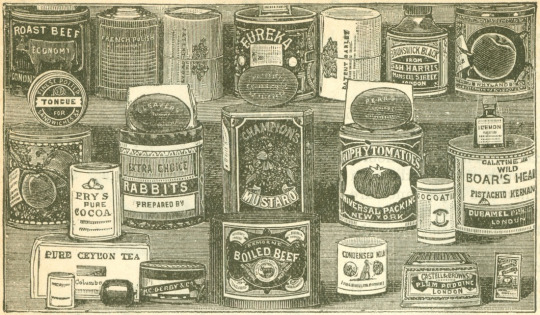
Above: Road trip snax.
Food preservation methods had existed long before canned meats and veggies and soups, but canned everything really started to gain traction around the middle of the 19th century, and people were stoked. Remember, the population exploded; people needed new methods of obtaining cheap food that didn’t spoil immediately. So: cans to the rescue!
Recycling hadn’t really been invented, though, so today, archaeologists constantly find giant Victorian trash pits filled with empty cans.
You know what also hadn’t been invented? Consumer health and safety boards.
So guess what was in the tin cans themselves?
No, no, don’t worry, it wasn’t arsenic.
It was lead.
Which, in case you weren’t aware, is also very, very bad for you.
So bad, in fact, that today, scientists are pretty sure lead-lined tins of canned food were partially responsible for the deaths on the disastrous Franklin Expedition, an ultimately futile trip to discover the Northwest Passage lead by Sir John Franklin in 1845. Every single man on board the two ships stranded in the Arctic died, and in the 1980s, when scientists discovered perfectly mummified bodies (GRAPHIC, if you don’t like that sort of thing, but awesome if you do) of some of the sailors, one of the mummies contained insane amounts of lead. They later tested the cans found scattered across the wreck site and whoops, they also contained insane amounts of lead.

Above: Some of the tin cans from the Franklin Expedition, which contained items like salted beef, vegetables, tea, lethal amounts of lead, and Chicken of the Sea.
Granted, other factors contributed to the Franklin deaths, like, you know, being stranded in the Arctic and starving to death, and also tuberculosis, but lead-lined canned food certainly didn’t help things along.
2. Your doctor
Here’s my advice if you’re in the Victorian era and you’re starting to feel sick: do not get sick. Just don’t. Because then that means you’ll have to go to the doctor. Which probably means you will die.
Hospitals in the 19th century were deadly. Often even more deadly than just staying at home, according to Dr. Lindsey Fitzharris, author of The Butchering Art. Nobody knew how to treat anything, really, because medical understanding of biology was in its infancy and antibiotics didn’t exist yet, so you were absolutely, definitely going to get some kind of infection the second you stepped foot in a Victorian hospital.

Above: The surgery, where nobody has any idea what they are doing, ever.
Doctors weren’t trying to kill you on purpose--they just didn’t know any better. And it super duper didn’t help that common treatments for everything from the common cold to tuberculosis included taking mercury (which kills you) and blood-letting, (which can also kill you) the tools for which are shown below:

Those might look like fun doodads for your astronomy class at Hogwarts, but they’re actually vials and a really, really sharp needle that pricks you until you bleed out a critically dangerous amount of blood into those vials.
The (ancient) school of thought behind blood-letting was that draining patients of “bad” blood would rebalance their “humours” and get rid of the icky thing that was making them sick. We might laugh at it now, but if you don’t know any better, logically, it makes sense.
Medically, oh my God, it’s the worst.
So if Doc didn’t bleed you to death, he might try surgery--done without anesthesia or antibiotics (until good old Dr. Lister came along--read The Butchering Art!), and then ship you and your amputated stump leg off to the hospital ward where, instead of healing, you’d get wheeled through hallways stained with every bodily fluid imaginable into rooms filled with people coughing up every bodily fluid imaginable, some of which would get into your leg stump, infect it, and then kill you dead.
“But what about medicine?” you ask. “Can’t I just take medicine?”
Sure! Just be aware that it definitely contains morphine and probably contains cocaine, or mercury, or arsenic, or sulfur, or pulverized bits of ancient Egyptian mummies (I am not kidding. True, the latter had started to fall out of favor in the 19th century, but, like. Stop).
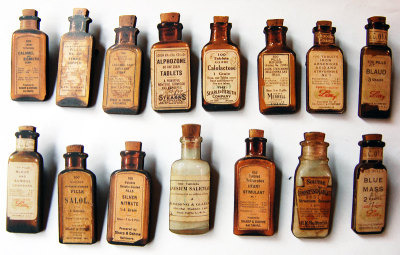
Above: Hard drugs, but just for you.
You think I’m joking?
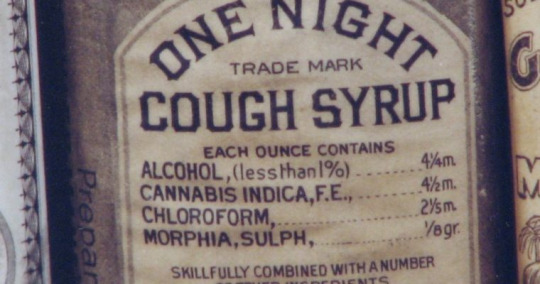
Above: PARTY TIME.
Sometimes, a doctor would just advise that you move to a “more temperate climate” like Rome or Spain if you were feeling chronically ill, which might help you get a tan and COULD help if you had sucky lungs, but eventually, you’d just die anyway, because what you really needed was a strong antibiotic or antiviral medication and the closest you were gonna get was Mrs. Hopplebopple’s Temperance Tonic, which was probably filled with ground up baby bones and just so much heroin.
And don’t even get me started on Victorian surgical tools:
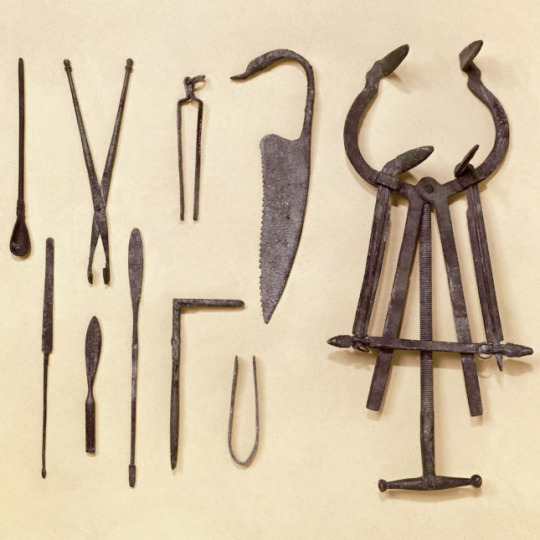
Open wide.
1. Water
There are three rules in this life: don’t watch any Adam Sandler movies except for maybe Anger Management, don’t eat the yellow snow, and do not, ever, for any reason, ever drink water in Victorian England.
That’s because it was about as clean as a Victorian hospital.
Meaning it wasn’t. At all.
Victorian water--of the Thames variety--contained:
Cholera, one of the deadliest killers of the era and bad water’s favorite roommate.
Poop, human and otherwise, because a functioning sewer system? I don’t know her. (At least, not until the 1860s.)
Pee, human and otherwise, because nothing says, “Jolly Old England” like an open trench of piss rolling through the city.
Dead things, like animals, fish (which are animals, so why am I listing them as a separate thing?), and, occasionally, humans.
Chemicals, which spewed forth from the great factories in billowing, bubbling, belching rivers of sludge. (Ha! Omg, yes, I was an English major!)
The Thames was so filthy that Londoners called it “Monster Soup.”

Above: Same.
In 1855, scientist Michael Faraday (who was also kind of hot; tell me I’m wrong), wrote a letter to the Times about the disgusting state of the river:
"Near the bridges the feculence rolled up in clouds so dense that they were visible at the surface, even in water of this kind. ... The smell was very bad, and common to the whole of the water; it was the same as that which now comes up from the gully-holes in the streets; the whole river was for the time a real sewer."
Tl;dr: “It smelled like ass.”
In fact, it got so bad, so putrid, so horrifically clogged with every disgusting thing your mind and your butthole can possibly conjure up, that it lead to one of my favorite things to read about in the world: The Great Stink of 1858.
Yes, that’s the real name. I did not make that up. History is incredible.

Above: Summer vacation, 1858.
The summer of 1858 was miserably hot in London. And the Thames was miserably clogged with poop, and pee, and chemicals, and dead things, and, uh oh, cholera. During July and August that year, the smell wafting from the river was so offensive that Parliament was actually adjourned because everybody kept throwing up. Cholera devastated the city. The water was killing London.
Faced with either the prospect of living with a city-wide vomit-and-diarrhea smell for the rest of forever OR finally cleaning things up, the government actually did something right and chose the latter. They contracted civil engineer Joseph Bazalgette to overhaul the city’s sewer, to which Bazalgette, pinching his nose, responded, “FINALLY.”

Above: Joesph Bazalgette, savior of the London sewers and purveyor of a truly beautiful mustache.
Bazalgette proceeded to build the London sewer system still in use today. His efforts greatly reduced the number of cholera deaths, cleared the Thames of its Cronenberg-esque muck, and ensured that poop goes where it’s supposed to: way the hell out of HERE and way the hell under THERE.
Water sanitation still had a long way to go, though, which meant you either had to boil your water to kill the bacteria in it, or you could just drink alcohol instead, which was the safer option but which would also leave you very dehydrated and also, if imbibed excessively, would leave you very dead.
So really, you were doomed in some way no matter what you did, and if that isn’t the moral of the entire Victorian story, then I don’t know what is.
2K notes
·
View notes